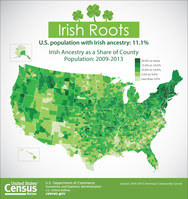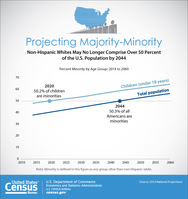While 52 percent of U.S. adults have taken the vows of marriage only once, the latest report from the U.S. Census Bureau’s American Community Survey shows that 17 percent have said “I do” two or more times. The findings show that of all U.S. residents age 15 and older, 13 percent have been married twice and 4 percent have walked down the aisle three or more times.
The new report,
Remarriage in the United States, uses American Community Survey data collected from 2008 to 2012 to look at marital history by selected socio-economic characteristics and for metropolitan statistical areas.
“In 1990, 54 percent of marriages were the first for both spouses,” said Jamie Lewis, an analyst in the Census Bureau’s Fertility and Family Statistics Branch and one of the report’s authors. “Now, newlyweds are more likely to be walking down the aisle for the first time — 58 percent of recent marriages were a first for both. The stabilization or slight decrease in the divorce rate during this period may explain why more marriages today are first marriages."
Below are a few highlights from the report:
*About 13 percent of men age 15 and over have been married twice, compared with 14 percent of women.
*Between 1996 and 2008-2012, the share of those who had married at least twice increased only for women age 50 and older and men 60 and older.
*Non-Hispanic white men and women are most likely to have married three or more times, while Asian men and women are least likely.
*Those employed are more likely to have married only once than the unemployed or those out of the labor force.
*About 70 percent of adults with personal incomes of at least $100,000 had married only once.
*Those with at least a bachelor’s degree are more likely to have married only once (64 percent) than all adults (52 percent).
*The majority of recent marriages (58 percent) are first marriages for both spouses, although 21 percent involve both spouses marrying for at least the second time.
*Remarried adults are more common in Southern and Western states and less common in the Northeast and Midwest. Among all states, the percentage of ever-married adults who had married two or more times is greatest in Arkansas (35 percent). Remarried people are least common in New Jersey (16 percent).
*Lake Havasu City-Kingman, Ariz., and Prescott, Ariz., are among the metro areas with the highest percentage of ever-married adults who had remarried.





